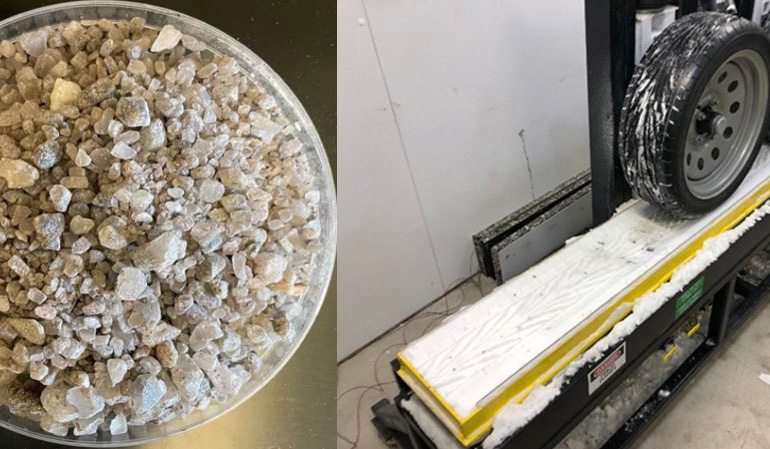The Maintenance Division of the Missouri Department of Transportation (MoDOT) uses different materials to reduce the negative impacts of snow and ice on state roadways. In addition to plowing, the use of chemicals and abrasives for highway winter maintenance operations is an essential strategy for ensuring a reasonably high level of service, yet the performance of such materials has to be balanced with their cost effectiveness and potentially detrimental effects on transportation infrastructure, the natural environment, and motor vehicles. This project addressed information gaps regarding the performance and impacts of these materials.
The objectives of this study were to evaluate the effective operational temperature ranges of designated products, any infrastructure impacts of the products on bridges and pavements, the performance characteristics of the products, and the cost effectiveness of various solid de-icing agents and liquid anti-icing and de-icing agents used by MoDOT.
MoDOT uses abrasives (sand or cinders), rock salt (sodium chloride), and other chemical deicers. This project evaluated nine deicer products: untreated rock salt, brine-treated rock salt, “Snow Slicer” treated rock salt, “Ice Ban” treated rock salt, the “Clear Lane” product, calcium chloride (flake/pellet) treated rock salt, calcium chloride (liquid) treated rock salt, beet juice treated rock salt, and “Top Film” treated rock salt.
The researchers conducted laboratory tests to evaluate the performance, effectiveness, and infrastructure impacts of the collected deicer products. To quantify the performance characteristics of deicers as a function of time, an ice-melting test measured the amount of ice melted by each deicer over time. To quantify the thermal properties of deicers, their characteristic temperature and the enthalpy of fusion were measured. To quantify the performance characteristics of deicers as a function of deicer concentration, eutectic phase diagrams were created. To quantify the ability of deicers to prevent compacted snow from bonding to the pavement—to facilitate subsequent mechanical removal—snow-pavement bond and friction tests were conducted. To quantify the corrosive effects of the deicers on carbon steel, the researchers measured the corrosion rates of carbon steel samples in diluted deicer solutions. To quantify the environmental effects of deicers on species in adjacent soil and water bodies, biological oxygen demand measurements were taken. To quantify the negative effects of deicers on concrete, the researchers conducted freeze-thaw tests of concrete in the presence of the deicers. Finally, to quantify the low-temperature behavior of asphalt binder affected by deicer, asphalt binder bending beam rheometer and asphalt mixture indirect tensile tests were conducted.
From the lab testing, the research team developed an evaluation matrix to assess the materials’ cost-effectiveness and potential impacts to infrastructure, motor vehicles, and water bodies. The highest scoring product was “Clear Lane,” followed by calcium chloride (liquid) treated rock salt and “Snow Slicer” treated rock salt.
Authors:
Jenny Liu
Jun Liu
Missouri University of Science and Technology
Xianming Shi
Mehdi Honarvarnazari
WSU Department of Civil and Environmental Engineering
Sponsor: Missouri Department of Transportation

